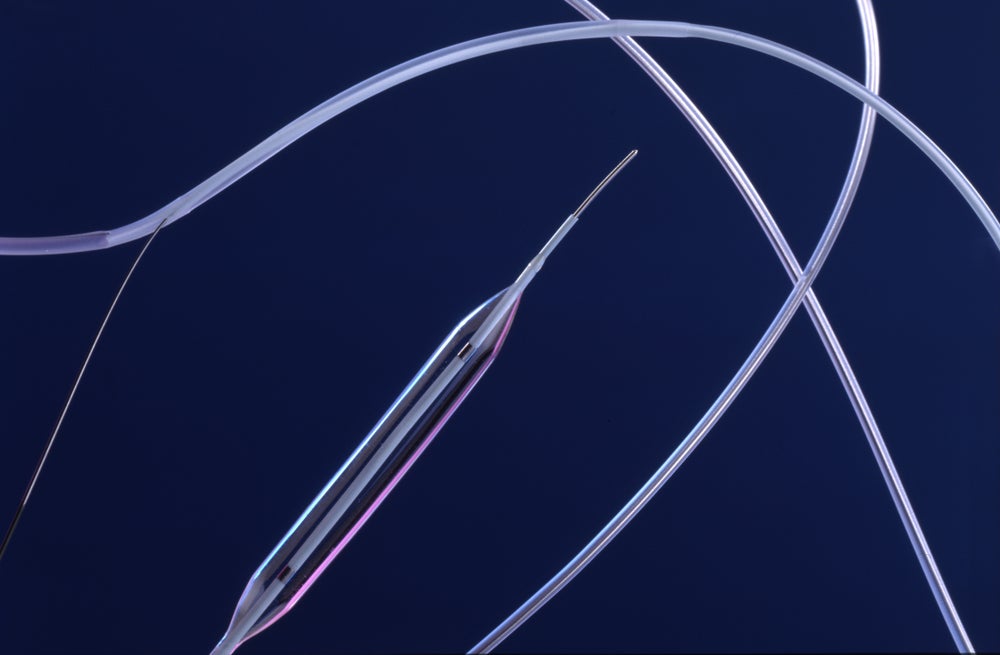
Catheters are used in a wide range of minimally invasive procedures as a tool for transporting treatments and therapies through small vasculatures to difficult-to-reach areas of the body such as the lower leg or brain.
There are several design challenges involved in catheter development, one of the most notable being the need for inside diameters wide enough to allow for the movement of therapeutic devices and implants all while ensuring that outside diameters – which are entirely limited by blood vessel anatomy – remain acceptable.
Faced with this challenge, device developers have set on thin-walled catheter designs as the solution. Such designs also facilitate a high degree of flexibility in the tube, perfect in demanding surgical procedures.
When producing thin-walled catheters, careful execution of the extrusion process with a strong focus on tight tolerances takes utmost importance. The specifications usually test the limits of free-form extrusion, which depends on air pressure within the tube. Instead, an over-extrusion process assisted by mandrels can be a more reliable way to control the profile.
Mandrel-assisted extrusion
Mandrels are cylindrical, tapered rods, typically made of stainless steel. In catheter forming, mandrels provide support and control of the inside diameter. Once the catheter has been built, the mandrel is removed, leaving behind a consistent hollow tube with a smooth inner surface. Some mandrels are produced with a PTFE coating to facilitate easy removal.
Using specially designed mandrels in manufacturing can also help to deliver more complex catheter designs, such as those with tapered profiles. According to leading medical wire contract manufacturer Custom Wire Technologies (CWT), mandrels tend to have the most unique design requests of the products it manufactures. Requests often include tapers, steps, radii, flats, and D-shapes.
While many catheter manufacturers use traditional wire mandrels, some opt for a cost-effective plastic. When it comes to producing microcatheters, wire is typically preferred due to its ability to be processed to smaller diameters. In addition, metal mandrels are essential in applications that involve high processing temperatures, where plastic would melt.
Custom mandrel grinding, performed by experts
Whatever the chosen material, tight tolerances are an essential feature of any mandrel. Grinding is a logical, economical choice for wire mandrels, enabling high precision and perfect surface finishes. The grinding department at Custom Wire Technologies has the ability to grind mandrels to very tight tolerances (±0.0005″ regularly, down to ±0.0001″ for certain applications), with diameters usually ranging from 0.032″ to 0.188″.
In complex designs, CWT can grind mandrels with multiple taper levels, including multi-angle tapers. Using a strategic suppliers, CWT can also add a PTFE coating to mandrels, with a variety of colours and formulations to choose from.
CWT also produces mandrels for use in its own manufacturing. The company is a leading provider of coils to the medical device industry, the majority of which are used in catheter designs. Using mandrels during coiling operations enables CWT to produce coils with varying outside and inside diameters along the length of the part. Thanks to this vertical integration, CWT can rapidly deliver high-quality, complex parts to customers.
To learn more about the use of precision grinding in medical device manufacturing, download the whitepaper below.


